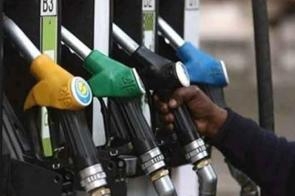
By Russell Jones
A recent article showed that there has been a large increase in taxes on petrol in the last ten years. This article explains what happens to the largest component – the money that goes into the National Land Transport Fund (NLTF).
The NLTF has three funding sources; fuel excise duty ($1.8 bln in 2016/17), road user charges ($1.5 bln in 2016/17) and motor vehicle registration and licensing fees ($223 mln in 2016/17).
Revenue into it has grown strongly in recent years; increasing by +43% between the 2009/10 and 2016/17 financial years. This is an increase in real terms after accounting for the Producers Price Index – Heavy and Civil and Engineering Construction which increased by +18% between 2010 Q1 and 2017 Q1.[1]
The NLTF is administered by the New Zealand Transport Agency with the following table showing the main expenditure items in the 2016/17 year.
| Category | $ million | Percentage |
| Investment management | 60 | 1.8% |
| Public transport | 334 | 9.8% |
| Walking and cycling | 42 | 1.2% |
| Road safety promotion | 33 | 1.0% |
| Local road improvements | 141 | 4.1% |
| Local road maintenance | 595 | 17.5% |
| Regional improvements | 69 | 2.0% |
| State highway improvements | 1,256 | 36.9% |
| State highway maintenance | 552 | 16.2% |
| Road policing | 321 | 9.4% |
| Total | $ 3,403 | 100.00% |
Source: National Land Transport Fund Annual report 2017.
Long term funding classes are not included, which probably includes the two roads being built as Public / Private partnerships; Transmission Gully and Puhoi to Warkworth. The small revenue from toll roads (Northern Gateway, Tauranga Eastern Link, Takitimu Drive) is not included. It should be noted that some of these categories also have local funding by Councils from rates.
Raising money through fuel taxation has the advantage that it’s relatively cheap and easy to collect as well as being difficult to avoid. Other alternatives include distance based charges (such as Road User charges) and tolling a road. These alternatives have the advantage of tying the charge more closely to the amount of use and in the case of tolling the cost of the project. It should be noted that the current toll roads in New Zealand have an alternative free route and that the tolls don’t usually fund the full cost of the road.
A drawback of petrol taxation is that it collects money from everyone who uses petrol, except for those who get a rebate. This means that boat, aircraft, garden machinery and other petrol consumers are paying towards land transport infrastructure they get no benefit from.
GST is charged on these taxes, adding another $0.5 bln to the price. That is on top of the GST charged on the non-tax costs. This is almost another $1 bln. That totals about $1.5 bln per year in GST. None of that goes into the NLTF.
Oil and Petrol
Select chart tabs
[1]Sources: Transport Dashboard at www.transport.govt.nz
We welcome your comments below. If you are not already registered, please register to comment
Remember we welcome robust, respectful and insightful debate. We don't welcome abusive or defamatory comments and will de-register those repeatedly making such comments. Our current comment policy is here.